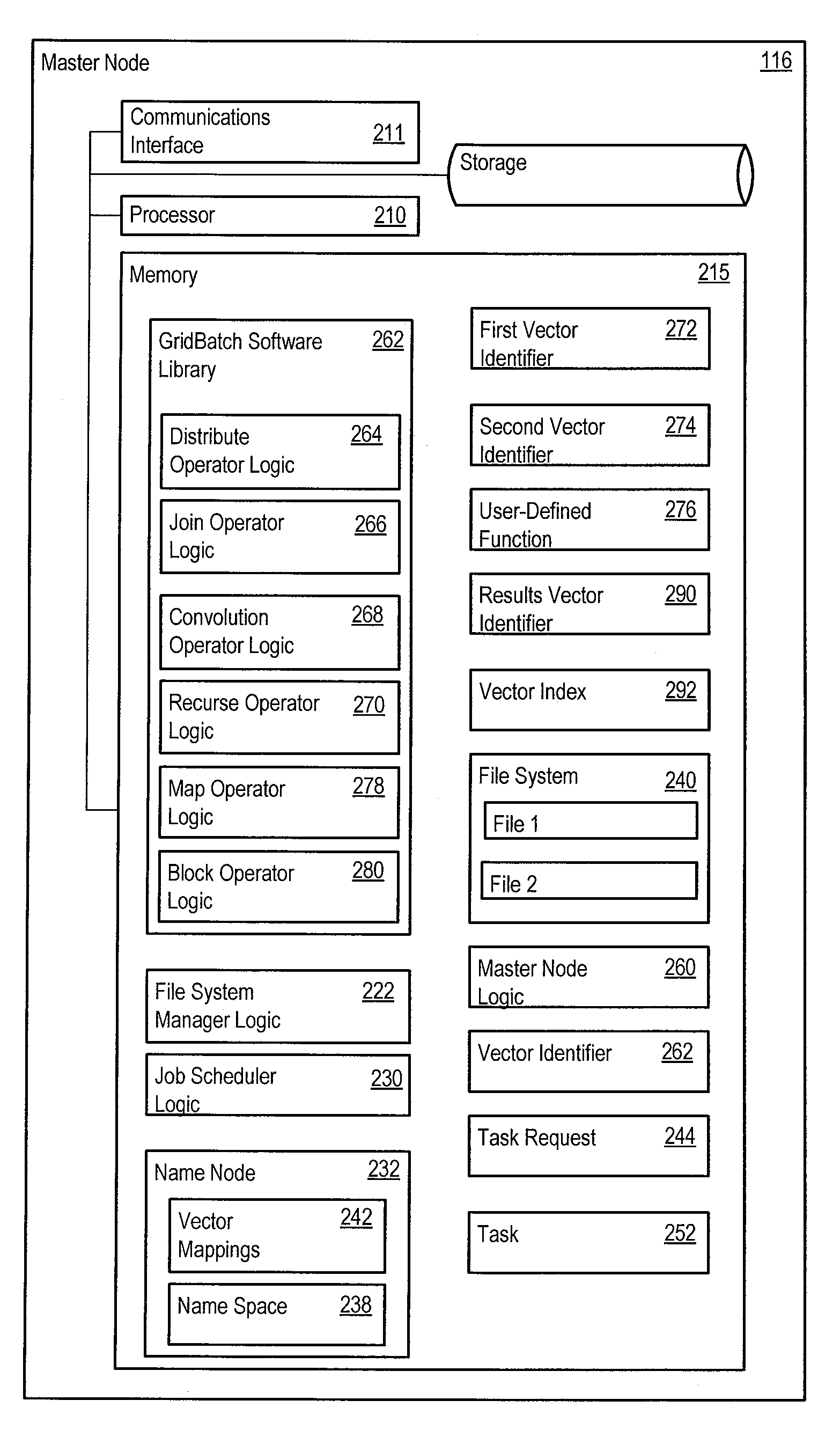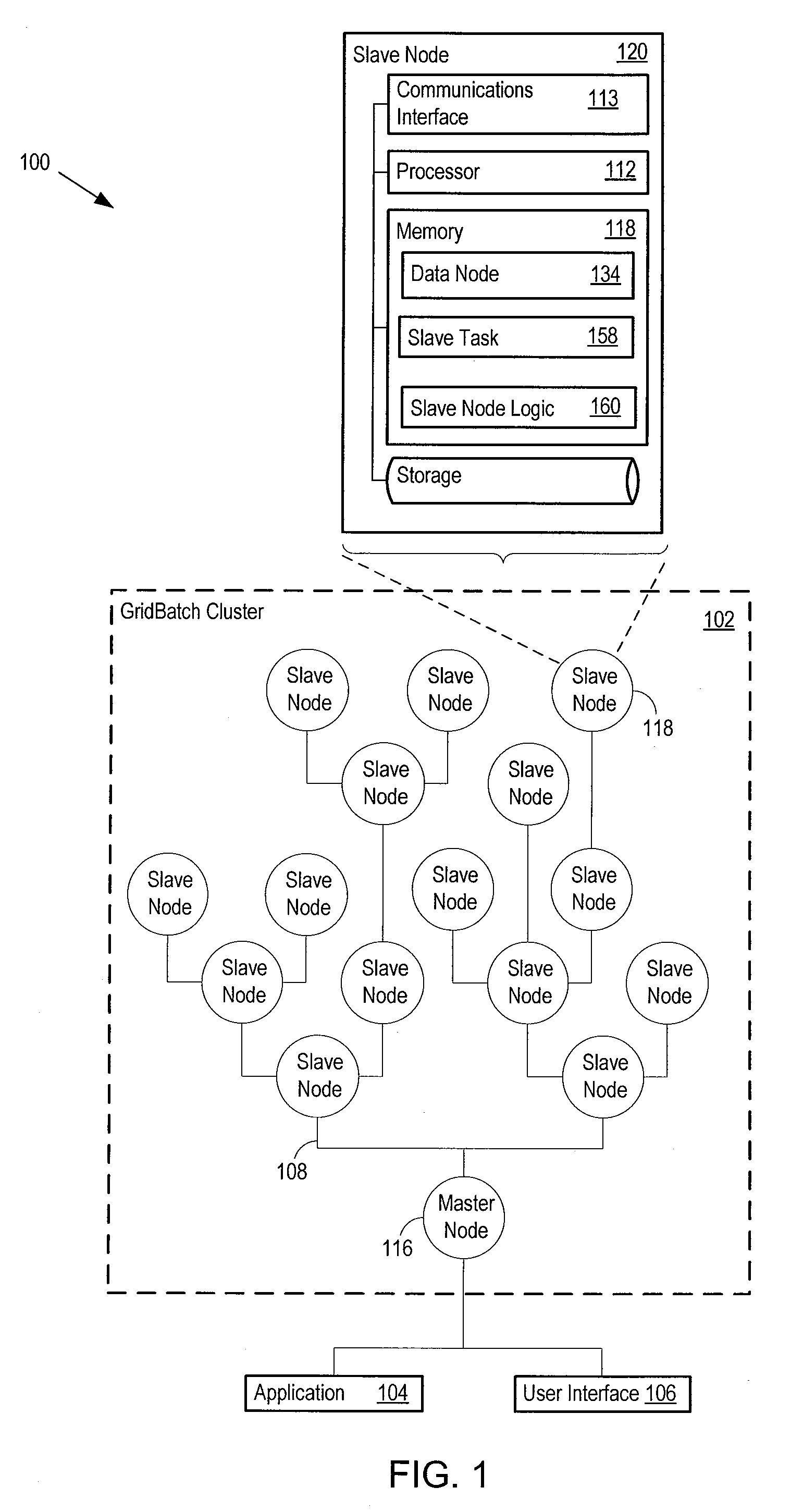Infrastructure for parallel programming of clusters of machines
a technology of clustering machines and infrastructure, applied in the field of infrastructure, can solve the problems of large disparity between the amount of data organizations, require hours and even days of computation time to produce useable, and no longer increase the speed of uniprocessors exponentially, so as to achieve the effect of easy conversion and highest performan
- Summary
- Abstract
- Description
- Claims
- Application Information
AI Technical Summary
Benefits of technology
Problems solved by technology
Method used
Image
Examples
Embodiment Construction
[0030]Earlier research on parallel computing focused on automatically detecting parallelism in a sequential application. For example, engineers developed techniques in computer architecture, such as out-of-order buffers, designed to detect dependencies among instructions and schedule independent instructions in parallel. Such techniques only examine code fragments coded in a sequential programming language and cannot exploit application-level parallelism. Accordingly, such techniques limit the amount of parallelism that can be exploited.
[0031]A large class of applications, in particular data-intensive batch applications, possess obvious parallelism at the data level. However, several technical challenges exist to implementing parallel applications. Programmers must address nontrivial issues relating to communications, coordination and synchronization between machines and processors when the programmers design a parallelized application. In stark contrast to sequential programs, prog...
PUM
 Login to View More
Login to View More Abstract
Description
Claims
Application Information
 Login to View More
Login to View More - R&D
- Intellectual Property
- Life Sciences
- Materials
- Tech Scout
- Unparalleled Data Quality
- Higher Quality Content
- 60% Fewer Hallucinations
Browse by: Latest US Patents, China's latest patents, Technical Efficacy Thesaurus, Application Domain, Technology Topic, Popular Technical Reports.
© 2025 PatSnap. All rights reserved.Legal|Privacy policy|Modern Slavery Act Transparency Statement|Sitemap|About US| Contact US: help@patsnap.com



